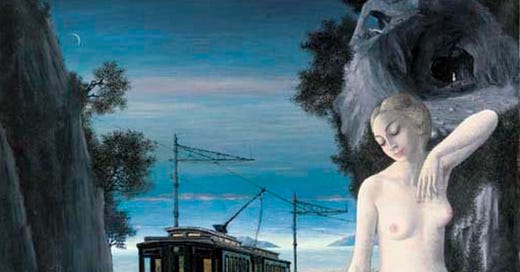For a hundred years or so, from the early days of Queen Victoria until the end of World War II, Britain was criss-crossed by railway lines. If you wanted to travel from one town to another, you travelled by train. Even Queen Victoria travelled by train, although she had her own royal carriage. Steam was everywhere, and coal was king. Then the automobile kicked in. From around the time I was born (1953: a date now rapidly receding into the past) many of the smaller branch railway lines began to close down, as more and more people could afford their own personal vehicle, powered by an internal combustion engine. I have no more clue how this works than how a steam engine does, but at this point Britain - and the world outside it - began to be ruled by petroleum, which is apparently made from compressed, pulverized fossils of long-extinct sea-creatures.
In what became known as the 1960s and on into the years that followed, these newly-extinct railway lines became footpaths between now abandoned railway stations. As a younger animal myself, I stalked up and down these pathways, noting the discarded wooden sleepers on which the rails themselves had once rested, and the empty coal bunkers, among other romantic relics. Even after only a decade, the vegetation sprouted so thickly that it became difficult to imagine a train passing along these leafy thoroughfares.
But I imagined them, nonetheless. They seemed to follow me around, these ghost railroads: there was one in Winchester, snaking along the side of St. Catherine’s Hill; one in the western corner of the Isle of Wight, running from Yarmouth to Freshwater; and one in North London from a derelict overground station in Highgate leading to Finsbury Park. At various times in my teens and 20s I lived near all of them. I could feel desertion in the air. I had the sense of having missed something, or someone.
This feeling began to seep into my unconscious. By 1980, I had a recurring train dream: I am on a 1930s-type steam train, heading along a phantom branch line somewhere between Winchester, Basingstoke, Reading and Oxford. It’s Sunday. Sometimes I’m in a veteran compartment that has no access to a corridor (descended from the old horse-drawn stagecoach, I presume), and other times I’m in the buffet car contemplating a glass of 1930s bottled beer. Possibly it’s Fremlins Elephant Ale, the one my father used to buy. His mother (my Grandma) was not a fan of beer:
“Ooh my, Robyn: whatever would you be drinking beer for? It’s horrible stuff, beer is.”
“How do you know, Grandma - have you tried it?”
“Ooh heavens no! Why would I try it? It’s nasty.”
Grandma felt much the same way about Basingstoke, which she never experienced either (apart from when she passed through it in the train). She doesn’t appear in this dream, sadly, but it unfolds in a landscape she would have recognized.
Nothing really happens in my train dream, but it feels significant. Occasionally my small train (three carriages maximum) arrives at a big station and I find myself standing by a newsagents. It’s oddly comforting. As someone who has a lot of nightmares, that’s maybe the appeal of this branch line world: it’s a scenario, not a story.
Eventually, this scenario played out in my head so often it became a song. I made it up on the piano in 1982, and sang it in a languid waltz tempo. Somewhere along the line, the song transferred to the guitar.
I often dream of trains when I'm alone
I ride on them into another zone
I dream of them constantly
Heading for paradise, or Basingstoke or Reading
My train also travelled lakeside through an icy land: the Arctic or maybe Siberia. Then I cut to another recurring dream I was having: a vision of accelerated autumn where, overnight, the trees shed their leaves and the daytime shrinks from summer hours to winter ones. This feels vivid: with golden sunlight on the side of the newly bare trees, and the green fleshy leaves on the ground beside them. It’s also quite disturbing. In the last verse of the song I picture a sleepwalker in moonlight walking down an endless corridor of railway carriages like the nudes in a Paul Delvaux painting. I’m serenading them in their sleep. Whether this is a good or bad feeling depends on how the somnambulist feels about meeting me in their dreams, I guess.
I often dream of trains when I'm with you
I wonder if you dream about them too
Maybe we'll meet one night
Out in the corridor, I'm waiting for you baby...
In 1984, I recorded the song at Alaska Studios in London, under the damp railway arches of Waterloo East station. Standing in the spore infested studio you could hear the trains rumbling overhead. If you listen closely to the recording of “I Often Dream of Trains” you can just make out, right at the beginning, my guitar picking up the high pitched hum of an electric current swirling overhead. So once again, the rails come alive…
You can listen to I Often Dream of Trains here.




One of the first songs I heard by you. Amazing album. Thank you for all the music.
Wow! Amazing insights, thanks for sharing. Interesting that Paul Delvaux’ specter is part of this dream. Back when I lived in Chicago always loved his paintings at the Art Institute. One I was particularly fascinated by, The Village of The Mermaids, I’ve always thought was used as inspiration in one of the later Tom Baker Doctor Who episodes (maybe Logopolis?) Brilliant minds…